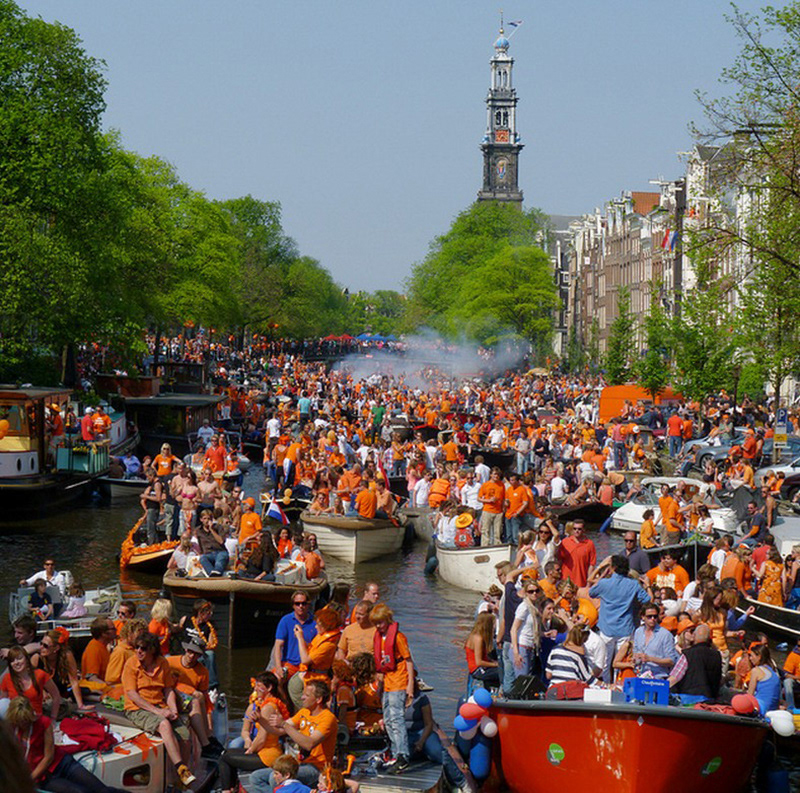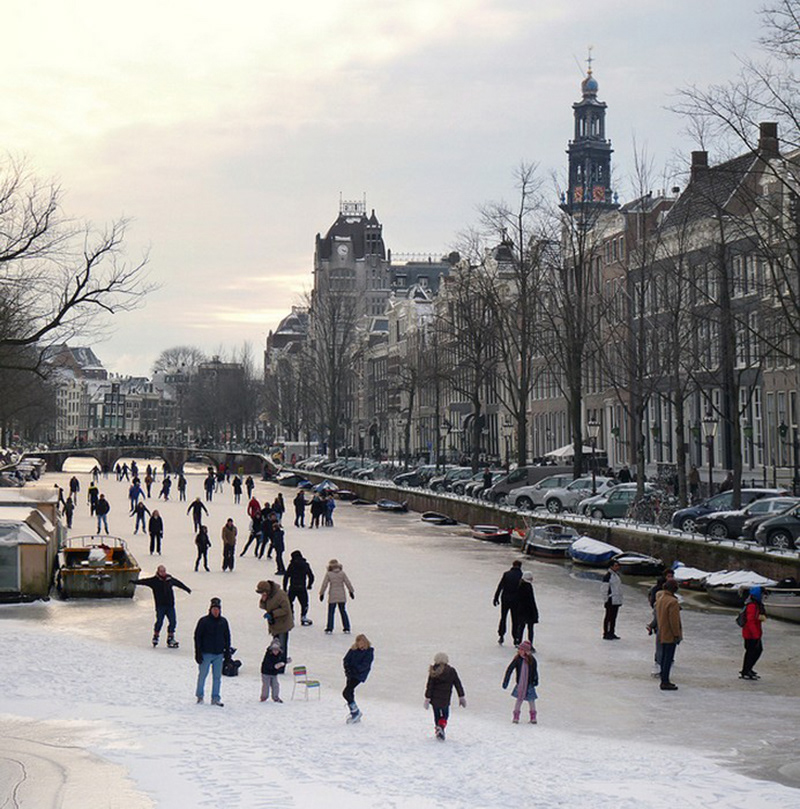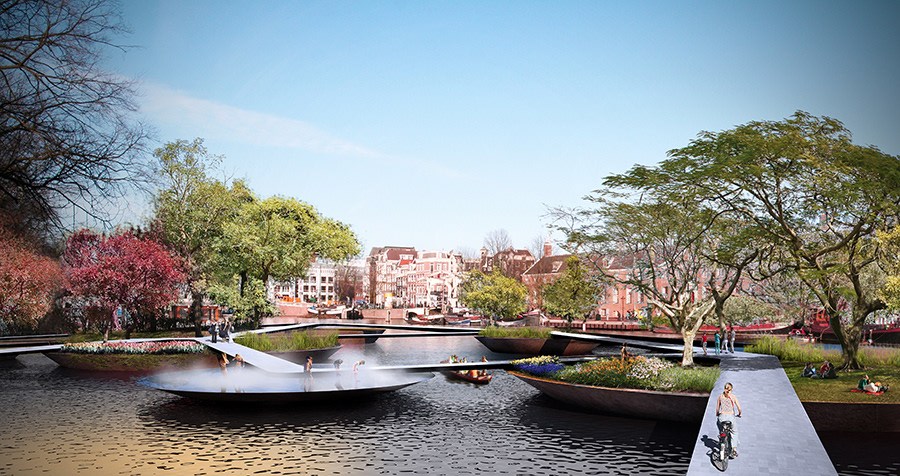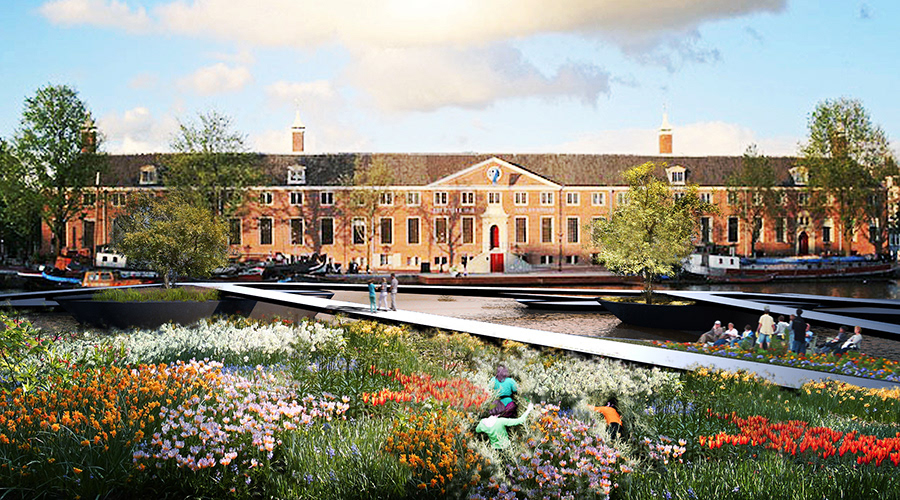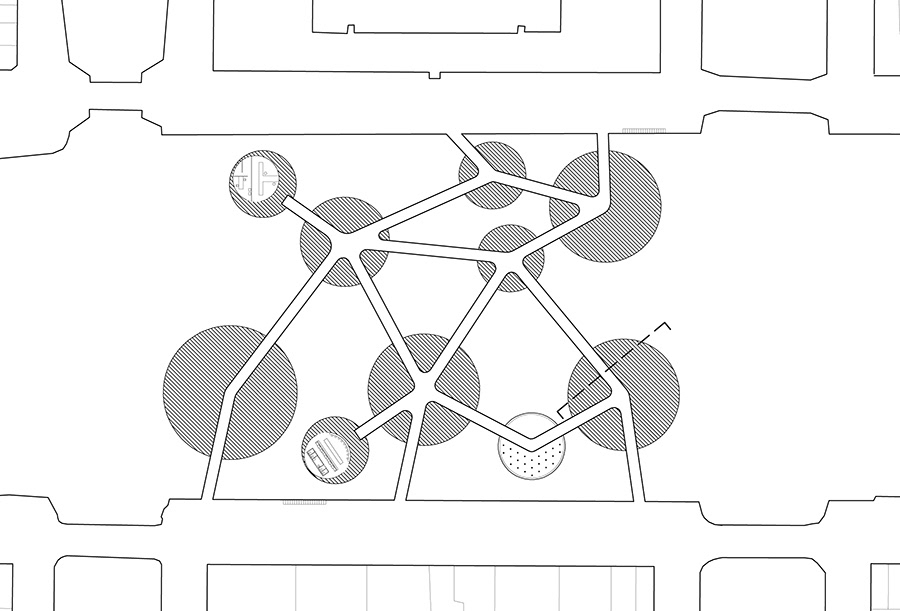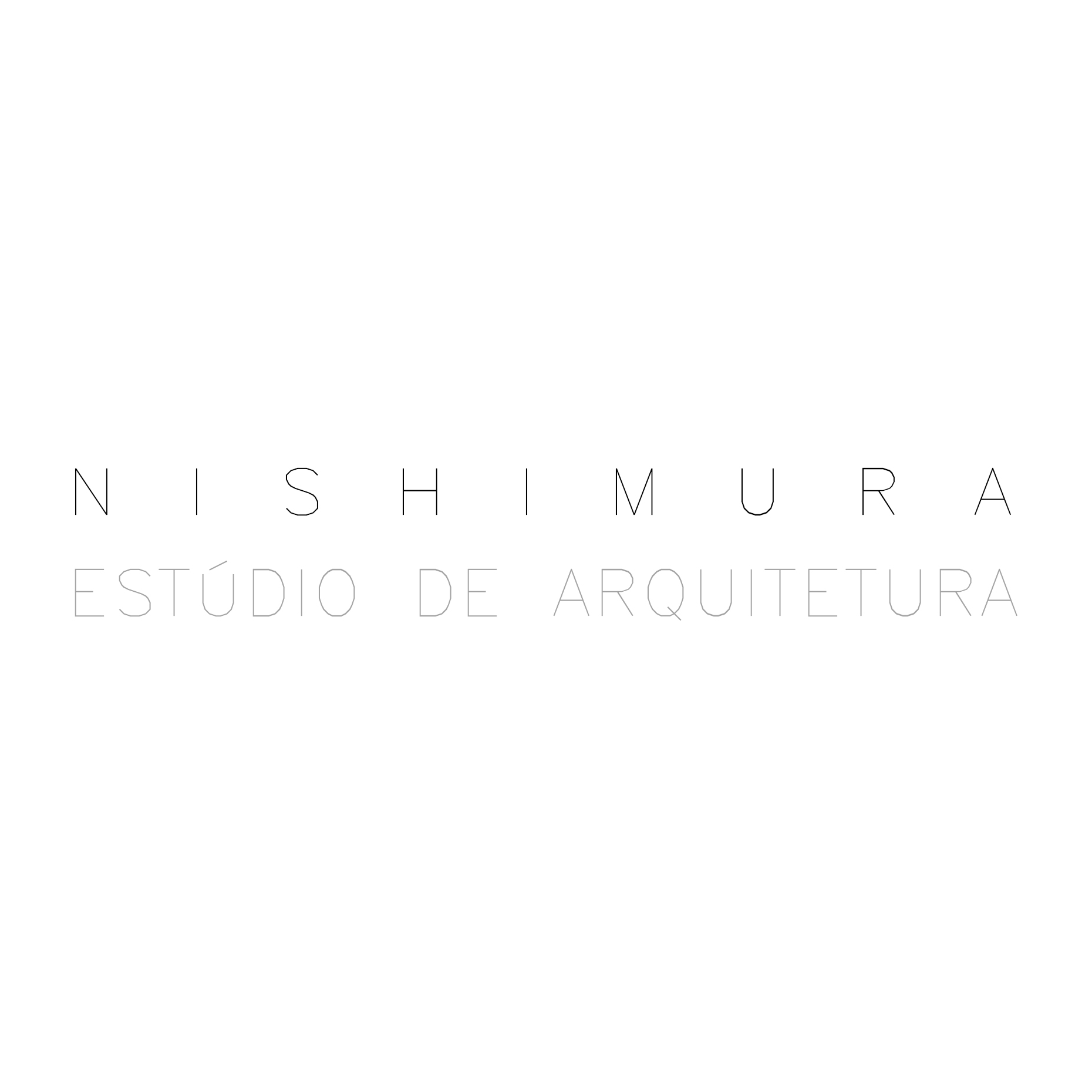THE THIRD BANK
The proposal for the pedestrian bridge represents the antithesis of the idea of passage as it doesn’t reserve itself just to the function to cross the canal, but rather, invites the passersby to stay. Two elements of composition, the dot and the line, are here relating to each other in a dialectical way, shaping themselves as the spaces of passage and permanence, and bringing to light the different times and conditions that coexist and constitute the urban environment.
The pathways are elevated and fluid lines, allowing different choices, different routes to those who seek not to cross from one margin to the other, but solely an alternative trail, a different sight of the city.
The gardens for permanence, as close to the water as they are, invite the memoirs of Amsterdam to be present and to
permeate the project. Each portion of land, settled where water previously existed, permits the appropriation of another point in the landscape, in a gesture of clear reference to the artificial hydrological systems that made possible the construction of this urban reality. Though these new polders placed in the canal admit the predetermined program such as the coffee shop, the administration office, and the bicycle repair, the majority of the new land is a garden whose programmatic vagueness gives complete freedom of use to the city.
The pedestrian bridge brings a discussion on the different rhythms of the city, summing two different layers: the accelerated time of the outflows, of the networks, and of the unstable landscapes, superimposed to another; the time of the sewing of the relationships, of the ephemeral but lingering settlement, of the construction of the territory, and of the forces of the absent presences.
Being the contemporary city a vast place of transit, it seems desirable that the lines that connect the several points of the mesh be ones made out of increasing quality elements and human sensitiveness, and the ones that display the whole complexity that it holds.
In the city of the Homines Manentes Apud Amestelledamme, men who live near the dyke of the Amstel River, the name Amstel seems to keep in its meaning the very essence of this proposal, where Ame (water) and Stelle (dry land) are the different pieces of an interchanging but also interdependent landscape. The third bank of the river¹ is, therefore, the constituting and inseparable part of a place whose perspective is newness, a place apart of the time and the space, crevice, sewing, gathering.
¹ROSA, João Guimarães (1988). Primeiras Estórias. Rio de Janeiro: Editora Nova Fronteira.32p.
The proposal for the pedestrian bridge represents the antithesis of the idea of passage as it doesn’t reserve itself just to the function to cross the canal, but rather, invites the passersby to stay. Two elements of composition, the dot and the line, are here relating to each other in a dialectical way, shaping themselves as the spaces of passage and permanence, and bringing to light the different times and conditions that coexist and constitute the urban environment.
The pathways are elevated and fluid lines, allowing different choices, different routes to those who seek not to cross from one margin to the other, but solely an alternative trail, a different sight of the city.
The gardens for permanence, as close to the water as they are, invite the memoirs of Amsterdam to be present and to
permeate the project. Each portion of land, settled where water previously existed, permits the appropriation of another point in the landscape, in a gesture of clear reference to the artificial hydrological systems that made possible the construction of this urban reality. Though these new polders placed in the canal admit the predetermined program such as the coffee shop, the administration office, and the bicycle repair, the majority of the new land is a garden whose programmatic vagueness gives complete freedom of use to the city.
The pedestrian bridge brings a discussion on the different rhythms of the city, summing two different layers: the accelerated time of the outflows, of the networks, and of the unstable landscapes, superimposed to another; the time of the sewing of the relationships, of the ephemeral but lingering settlement, of the construction of the territory, and of the forces of the absent presences.
Being the contemporary city a vast place of transit, it seems desirable that the lines that connect the several points of the mesh be ones made out of increasing quality elements and human sensitiveness, and the ones that display the whole complexity that it holds.
In the city of the Homines Manentes Apud Amestelledamme, men who live near the dyke of the Amstel River, the name Amstel seems to keep in its meaning the very essence of this proposal, where Ame (water) and Stelle (dry land) are the different pieces of an interchanging but also interdependent landscape. The third bank of the river¹ is, therefore, the constituting and inseparable part of a place whose perspective is newness, a place apart of the time and the space, crevice, sewing, gathering.
¹ROSA, João Guimarães (1988). Primeiras Estórias. Rio de Janeiro: Editora Nova Fronteira.32p.
